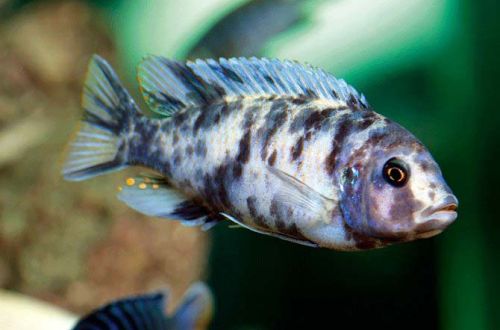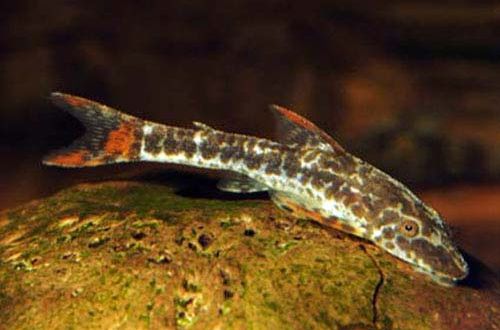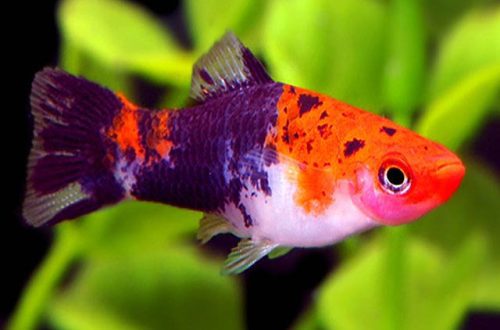
Panther zebra
Danio-panther, scientific name Danio aesculapii, belongs to the family Cyprinidae (Cyprinidae). In many sources, this fish has a name associated with the Panther, however, at the time of writing, such an analogy remained a mystery to the authors.
As for the Latin (scientific) name, it goes back to the ancient Greek god of medicine Asklepios (Ἀσκληπιός), who in the legend is represented by an old man with two staffs decorated with snakes. The zoologists who gave the name to the new Danio species thought that the pattern on the skin of these snakes surprisingly resembles the color of fish.

Contents
Habitat
It comes from Southeast Asia from the territory of Myanmar, the state of Rakhine, which stretches along the western coast and is bounded on one side by the Bay of Bengal, on the other by the Arakan Mountains.
Fish inhabit small rivers flowing down from the mountains. They are found mainly in the flat part, where rivers form backwaters, and the current is not so intense. The natural habitat is variable and depends on the time of year. During the monsoons, the water level rises significantly, its hydrochemical composition also changes, it becomes cloudy.
Brief information:
- The volume of the aquarium – from 60 liters.
- Temperature – 22-27°C
- Value pH — 6.5–7.0
- Water hardness – 1–8 dGH
- Substrate type — stony
- Lighting – any
- Brackish water – no
- Water movement – little or no
- The size of the fish is 8–10 cm.
- Food – any food
- Temperament – peaceful
- Keeping in a group of 8-10 individuals
Description
Adult individuals reach a length of up to 3 cm. The color is gray-blue, the abdomen is silvery. The body pattern consists of a series of 6–8 short vertical golden strokes. Sexual dimorphism is weakly expressed, males and females are practically indistinguishable from each other. The latter are somewhat larger and noticeably round during the spawning period.
Food
Undemanding to the diet. Most popular foods will be accepted in the home aquarium: dry flakes, granules, freeze-dried, frozen or live bloodworms, daphnia, brine shrimp. It is recommended to combine several types of products, which contributes to the manifestation of a better color and has a positive effect on the tone of the fish.
Maintenance and care, arrangement of the aquarium
The optimal size of an aquarium for long-term maintenance starts from 50-60 liters. This volume is quite enough for a small flock of Danio-Panther. The design uses rocky soil, driftwood of various sizes and dense thickets of plants. In nature, fish can live in heavily overgrown water bodies, so the principle is simple – the more plants, the better. It is advisable to use unpretentious species such as Anubias, as well as aquatic mosses and ferns.
Successful keeping depends largely on maintaining stable water conditions with suitable pH and dGH values and regular maintenance of the aquarium. The standard procedures include: cleaning the substrate and decorative elements from organic waste (food residue, excrement, plaque), weekly replacement of part of the water (20–30% of the volume) with fresh water, equipment maintenance. The latter, for example, includes checking, replacing or washing the filter material in the filtration system. Important: the fish needs a high level of dissolved oxygen in the water and does not respond well to internal flow.
Behavior and Compatibility
Peaceful moving fish. It belongs to schooling species and prefers to be in a group of 8-10 individuals. Compatible with other species of comparable size and temperament.
Breeding / breeding
Breeding is quite simple, but requires some experience. In nature, the mating season begins with the advent of the monsoons, when the rivers are filled with rainwater rich in nutrients washed away from the soil. In an aquarium, spawning can be stimulated by lowering the temperature by adding cool water and keeping it at this level for several days. At this time, protein food should become the basis of the diet: live or frozen brine shrimp, bloodworms, etc. If conditions are favorable, females can come into a spawning state – they become noticeably rounded, filled with caviar.
Females scatter eggs in the water column or among thickets of plants, and males at this moment fertilize them. Parental instincts are not developed; on occasion, adult fish will happily eat their own offspring, so the survival rate of fry in a common aquarium will be minimal.
In order to preserve juveniles, spawning is carried out in a separate tank with identical water conditions, where the female and the most active male are placed. When the eggs are laid, the fish are returned back.
An alternative way is to place a fine-mesh net or a special spawning substrate (artificial imitation of plants) on the bottom of the main aquarium, once where the eggs are in relative safety. It remains to carefully collect them (in the case of a net) or transfer the spawning substrate to a previously prepared tank.
The incubation period lasts about 36 hours. At first, for 3–4 days, the fry feed on the remains of the yolk sac, and then begin to swim freely in search of food. Feed microfoods such as brine shrimp nauplii or special powdered foods for juvenile aquarium fish.
Fish diseases
In a balanced aquarium ecosystem with species-specific conditions, diseases rarely occur. Often, diseases are caused by environmental degradation, contact with sick fish, and injuries. If this could not be avoided and the fish shows clear signs of illness, then medical treatment will be required. Read more about symptoms and treatments in the Aquarium Fish Diseases section.





